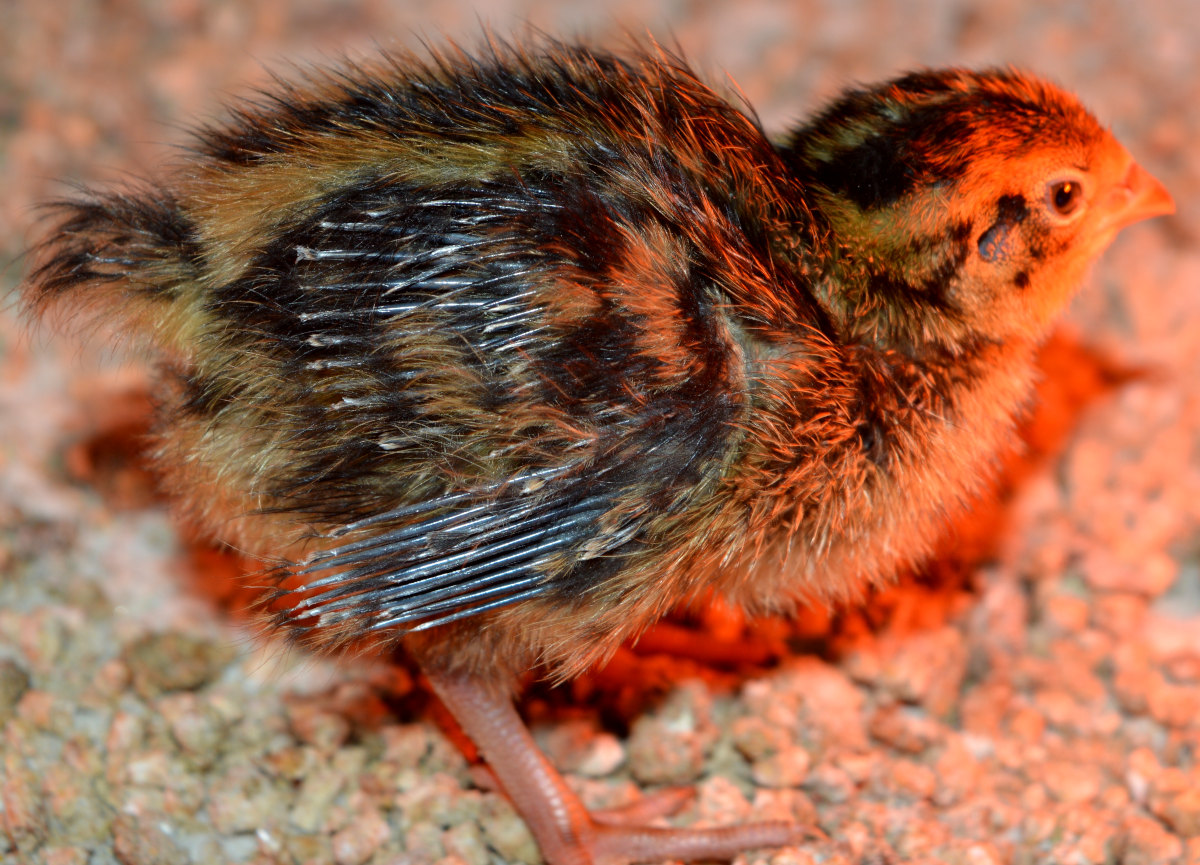From brooder to backyard: When can Quail safely be moved off heat and outside.

Moving quail off heat is a little like sending kids to school for the first time—you want to wrap them up and keep them safe, but at some point, they’re ready to spread their wings (literally). With the right timing and preparation, they’ll adapt quickly, and you’ll wonder why you worried so much.
Quail are pretty hardy birds, and they grow quickly. When deciding to take them off heat and let them outside, a few factors come into play, mainly their age, feather development, and the outdoor temperature.
Typically, quail chicks can be taken off heat and introduced to the great outdoors at around 3 to 4 weeks of age. By this time, they should have most of their feathers, rather than the downy fluff they have as chicks. Feathering is a good indicator that they can handle outdoor temperatures.
First-hand note: In summer, I’ve had chicks feathered and ready to go outside at just under three weeks. In winter, I sometimes keep them on heat until week five. Feathers are the big milestone—until they have a full coat, they can’t regulate their own temperature reliably.
Below: Quail with pin feathers of down still showing are too young to survive outdoors on their own.

As for the temperature, you want it to be consistently warm. Ideally, the daytime temperature should be around 70-80°F (21-27°C) or higher. Avoid taking them out if it's too cold, and ensure they have shelter in case the weather turns bad. You don't want them to get chilled; that can be detrimental to their health.
You can move quail outside when the night-time temperature is at least 10–15°C (50–60°F) and they are fully feathered. If it’s colder than that, you’ll need a sheltered, draught-free pen or an outdoor heat source for a week or two.
Extra tip: Even in summer, a cold snap can happen. I always check the weather forecast before moving chicks outside permanently.
Hardening quail chicks off – The safe transition.
Don’t just plonk them from a cosy brooder to the great outdoors. Gradually introduce them to cooler air:
- Put them outside in a secure cage for a few hours during the day.
- Increase the time daily over a week.
- Watch how they behave—if they huddle constantly, bring them back to warmth.
When I skipped this step once, the chicks sulked, stopped eating for a day, and generally looked miserable. Lesson learned.
Before moving them outside, make sure their new outdoor enclosure is secure and safe from predators. Quail are tiny, and they can easily fall prey to birds, cats, or other critters. Also, you'll want to provide them with a covered area or some kind of shelter where they can go if they feel the need to get out of the sun or rain.
Below: These quail are ready to come "off heat".
When you're ready to make the move, do it gradually. Start by putting them outside in a small pen during the day, and then bring them back inside at night for a few days. This helps them acclimate to the change in temperature and environment.
Keep a close eye on your quail. If they huddle together or appear distressed when outside, it might be too early to leave them out full-time. Give them more time to adjust.
How to transition your quail to the outdoors:
Once your quail are fully feathered and the weather is warm enough, you can start transitioning them to the outdoors. Here's how I do it:
- Start by putting your quail outside for a few hours each day in a sunny spot.
- Gradually increase the amount of time they spend outside each day.
- After a week or two, you can leave your quail outside overnight.
- Provide your quail with fresh water and food every day. Well fed birds are more tolerant of change.
- Clean your Quail's enclosure regularly. Dry bedding will help.
It's important to monitor your quail closely during this transition period to make sure they are adjusting well. If they seem cold or stressed, bring them back inside.
Final checklist before moving Quail off heat:
- Fully feathered (including head and neck).
- Eating and drinking well.
- Outside temperature is safe for their age.
- You’ve tested them in cooler conditions for a few hours without problems.
Remember that each quail's development can vary slightly, so use your best judgement based on their feathering and the local climate. Once they're fully feathered and the weather is mild, you'll have a happy flock of quail enjoying the great outdoors. Good luck with your quail raising adventure!